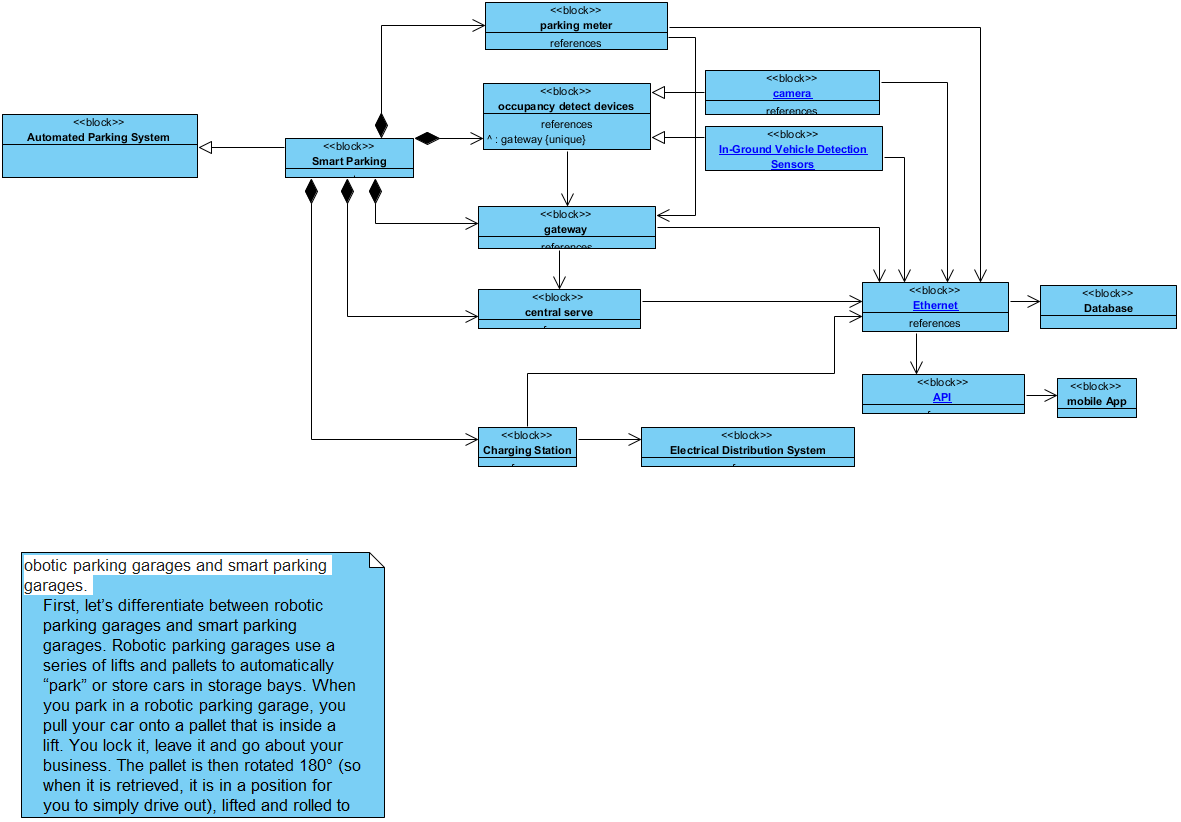|
|
|
SmartBuilding : Model . Structure : Package . Automated Parking System : Block
Block Definition Diagram - Automated Parking System Block Definition Diagram
![]() link
link
| Jump to: |

|
| Model Elements |
| Name | Description | ||
|
|
|||
|
|
|||
|
|
|||
|
|
|||
|
|
|||
|
|
|||
|
|
|||
|
|
|||
|
|
|||
|
|
|||
|
|
|||
|
|
|||
|
|
obotic parking garages and smart parking garages. First, let’s differentiate between robotic parking garages and smart parking garages. Robotic parking garages use a series of lifts and pallets to automatically “park” or store cars in storage bays. When you park in a robotic parking garage, you pull your car onto a pallet that is inside a lift. You lock it, leave it and go about your business. The pallet is then rotated 180° (so when it is retrieved, it is in a position for you to simply drive out), lifted and rolled to a storage bay. The beauty of the robotic system is the space efficiency. You use less headroom per floor and you don’t need space for drivers to drive to a space or space for walking between cars. You pack the cars in. It’s a great solution for dense urban areas where the cost of land is at a premium. Smart parking garages are different. They use cameras, digital signage, sensors and software to gather data on vehicles and parking spaces. Then the information is processed to more efficiently manage parking spaces, guide drivers to open parking slots, identify the owners of the cars parked in the facility and interact with other building technology and business systems.
At the entrance into the facility, cars come in and go over a speed bump to slow the car down or a magnetic loop detector signals the presence of a car. A camera then takes a picture of the car’s license plate. The camera setup includes an infrared light (not visible to the human eye) which illuminates the license plate and then snaps a picture. The picture or pixel image is then analyzed in a process similar to Optical Character Recognition (OCR) software. The license plate number is then stored in the system or correlated to a database of license plates, along with other data (time and date, parking space allotted, picture of the driver, etc.). After the car enters the facility, the system determines the parking place it should use. Each parking place in the facility has an occupancy sensor and a light associated with it. The sensors provide information on how many parking places are vacant and where those parking places are. The system turns on the light above the parking place that should be used and it uses digital signage in the facility to direct the driver to the parking space. The car pulls into the parking space and the occupancy sensor senses the car, notifies the system of the occupancy, which then turns the light off above the parking space |
||
|
|
|||
|
|
|||